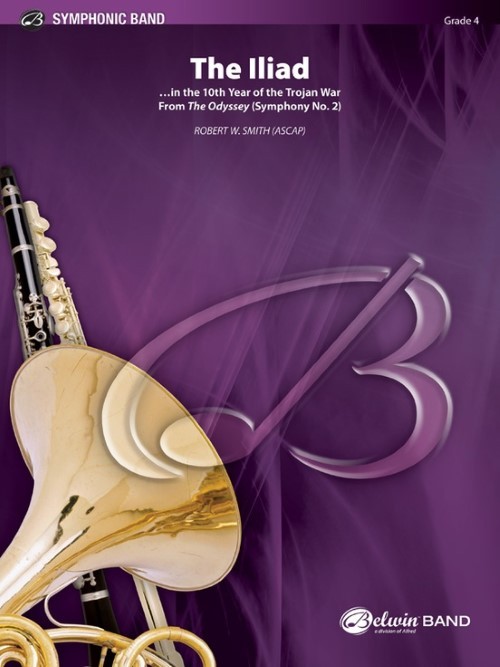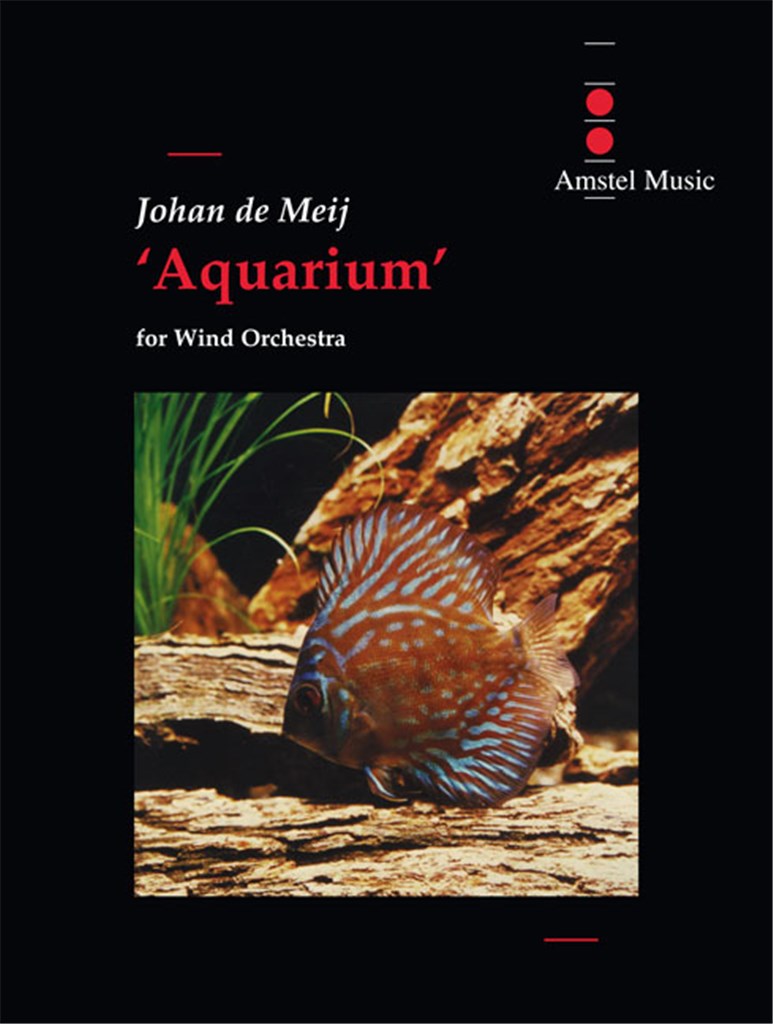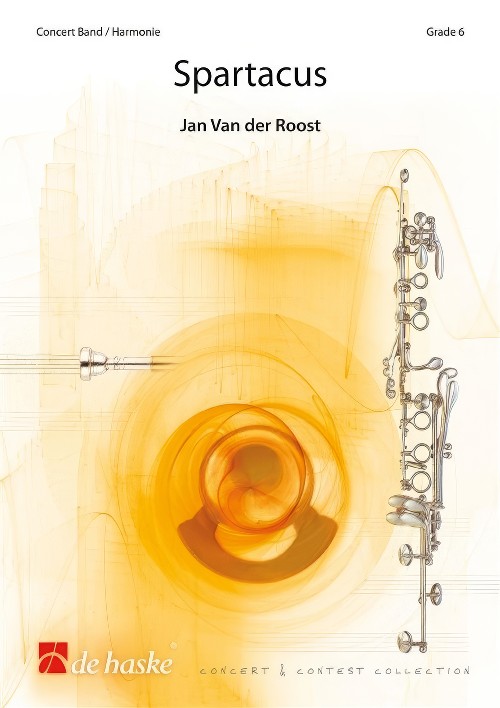Results
-
 £87.50
£87.50The Iliad (from The Odyssey, Symphony No.2) (Concert Band - Score and Parts) - Smith, Robert W.
Calls to war are the prelude to this first movement of Robert W. Smith's Second Symphony for band, based on the classic story of 'The Odyssey'. You'll experience the squeaky wheels of the Trojan horse, the forest burning, and the sword fight amidst the distinguished regal melodies and energetic rhythms that drive to a conclusion. The ocean's presence is evident in the optional transition to the second movement, "The Winds of Poseidon". Much awaited, this work is monumental in nature. Duration: 7.45
Estimated dispatch 7-14 working days
-
 £98.50
£98.50The Winds of Poseidon (from The Odyssey, Symphony No.2) (Concert Band - Score and Parts) - Smith, Robert W.
The Winds of Poseidon launches the eagerly awaited Second Symphony from the pen of Robert W. Smith. This work, the second movement of the symphony, is based on the classic story The Odyssey. Odysseus is the shipwrecked warrior who wanders the land and sea for ten years, and this bold musical statement captures the essence of the powerful winds and waves that propel Odysseus on his journey. The center section was inspired by the tale of the Sirens, whose beautiful and captivating singing lured sailors to their deaths on the rocks. The genius of the composer is strongly in evidence in this gigantic musical tale. Duration: 7.30
Estimated dispatch 7-14 working days
-
 £128.00
£128.00Aquarium (Concert Band - Score and Parts) - De Meij, Johan
The Suite Aquarium is Johan de Meij's third composition for symphonic band and features six tropical fishes, each of them represented by a motif, and surfacing as such in several guises. The composition consists of three movements of which the second and third merge uninterruptedly into each other. I) Allegretto grazioso (Neon Tetra, Electric Eel and Angelfish) II) Andante / Adagio (Sea Horse and Zebrafish) III) Finale: Allegro giocoso (Guppy & Co.) The Neon Tetra motif functions as a kind of 'Leitmotiv' and describes the beautifully coloured, frisky fish: A number of variants have been derived from this theme and will also appear in the other movements. The Electric Eel in fact is not represented by a motif, but by a rhythm based on the restless electric pulses made audible in some aquaria. The Angel fish is represented by elegant cluster chords. In the second movement the Sea Horse emerges out of the water vegetation and starts a dialogue with the Zebrafish, which is represented by one melodic phrase in unison, getting more and more threatening by added parallel fifths and octaves. Simultaneously with the Sea Horse motif the Neon Tetra theme emerges, this time in 3/4 time and in Eb minor. The third movement starts with only two instruments (trumpet and xylophone), but as it is often the case with Guppies their number rapidly increases. Piccolo and Alto Saxophone introduce the Guppy Theme followed by several instrumental combinations. Every theme from the first movement 'swims by' once more, after which the principal motif leads us to a brilliant ending.Duration: 9.00
Estimated dispatch 7-14 working days
-
 £179.99
£179.99Spartacus (Concert Band - Score and Parts) - Van der Roost, Jan
Spartacus is a "Symphonic Tone Poem" with 3 joints. Each section has its own melodical materials, however: in the final movement the main theme from the second section returns in a 'grandioso'-tutti. The last bar but one recaptures the 'oriental' atmosphere of the very beginning. The first section (= from the beginning till J) builds up a climax by repeating and accumulating some melodical and rhythmical structures. The oriental character of the melodical fragments refers to the origin of the Roman slaves. The second section evokes the love between Spartacus and his love by giving a peaceful atmosphere. The mean theme (presented the first time at letter L) has a broad and wide character and refers slightly to film music. In this part of the composition, a special attention is given to the orchestration. The final section is more aggressive and martial and refers to the revolt of the slaves against the Roman oppressors. In the middle of this movement, an accumulation of the 12 tones symbolises the crucifixion of the slaves: the english horn resumes partly the cadenza of the flute (at letter J), as if he wants to show again the eternal love between Spartacus and his love a very last time ... The theme at the third bar of letter T is actually based on the 2nd theme of this section (which starts at the fifth bar of letter R), but has been worked out rhythmically.Duration: 13:50
Estimated dispatch 7-14 working days
-
 £139.99
£139.99Cobra Wind Band Set (Score & Parts)
Shortly after the Second World War, a combative movement of Danish, Belgian and Dutch artists chose the cobra snake - extremely dangerous yet considered sacred - as a symbol of their resistance to strict guideliness of form. The name "Cobra" also happens to contain the first letters of the cities Copenhagen, Brussels ans Amsterdam, from where most of the movement's members came. The Cobra movement, which existed from November 1948 until November 1951, can with some justicication be called the last major avant-garde movement of the 20th century.The source of inspiration for the composition Cobra comes from four paintings: "Obhobning" by the Dane Egill Jacobsen; "La jeune fille et la mort" by the Belgian Pierre Alechinsky; "Orgeldraaier" and "Le rythme joyeux de la ville" by the Dutch artists Karel Appel and Corneille. Obhobning means "pile-up", which is represented musically in the first part by a melodic and harmonic pilling up of perfect fourth's. The first part is also characterized by a rhythmic feeling, which the painting gives through its use of numerous black stripes. In the painting La jeune fille et la mort, Pierre Alechinsky places a young girl opposite Death. The second part features the constantly pulsating motion of live while a creeping, dark, melodic line develops. The tension between life and death is tangible as a battle reveals itself. In part three, one hears the Orgeldraaier by Karel Appel, as cheerful and playful as an organ grinder's music. The painting Le rythme joyeux de la ville by Corneille is busy and extremely dynamic, a perfect source of inspiration for a powerful, rhythmic ending to this composition. 0:09:57
Estimated dispatch 7-14 working days
-
 £53.46
£53.46Dances Fantastique
This exciting new work for concert band is a set of three delightful dances. Opening with a bold fanfare statement, the first dance reveals the melodic material that is the basis for all three movements. The title of this movement, Double Dance, is derived from the second statement of the melody, appearing in doubled rhythmic values. The second movement, Round Dance, the melody is written as a three part round. You could not have a Round Dance without a Square Dance, which is the title of final movement. Lots of fun percussion instruments add interesting timbres throughout. This interesting and clever composition is perfect for contest and festival.
Estimated dispatch 7-14 working days
-
 £174.99
£174.99Excelsior Wind Band Set (Score & Parts)
Excelsior was composed by Rob Goorhuis in the year 2000 on the occasion of the 75th anniversary in 2001 of the Amsterdam-based concert-band Jong Excelsior. Excelsior is a one-movement fantasia, consisting of contrasting themes. The first theme (the Excelsior theme) is characterized by angular figures moving in an upward direction. The second theme is playful and humorous in nature. Rob Goorhuis, who was born and bred in Amsterdan, may even have utilized memories of his own juvenile pranks in this second theme. The third theme, which is introduced by the cor anglais is melancholy and melodious. The elements mentioned above interchange in a thoroughly captivating manner, which ultimately results in an attractive composition fully capable of adding lustre to an anniversary. Excelsior werd door Rob Goorhuis gecomponeerd ter gelegenheid van het 75-jarig jubileum van muziekvereniging Jong Excelsior te Amsterdam. Excelsior is een doorgecomponeerde fantasie, bestaande uit met elkaar contrasterende themas. Het eerste (Excelsior)thema wordt gekenmerkt door hoekige stijgende figuren. Het tweede thema is speels en humoristisch van karakter. Rob Goorhuis, geboren en getogen Amsterdammer, verwerkte hierin wellicht herinneringen aan de kwajongensstreken uit zijn jeugd in Amsterdam. Het derde thema, ge?ntroduceerd door de Engelse hoorn, is melancholiek en zangerig. Genoemde elementen wisselen elkaar op boeiende wijze af, zodat een attractieve compositie is ontstaan. Dit werk is opgenomen in het Klein repertorium, harmonie - 1e divisie 12:00
Estimated dispatch 7-14 working days
-
 £47.52
£47.52I'll Love My Love
Was Holst's Second Suite in F the work that made you fall in love with the sound of the concert band? Now, you can share that feeling with your developing musicians with this accessible setting of the achingly beautiful tune from its second movement. Carefully crafted, "I'll Love My Love" will expand your ensemble's technical and emotional range with its rich harmonies and engaging countermelodies. Not just a watered-down version of Holst's masterpiece, "I'll Love My Love" is an original treatment that will give you, your students, and your audience a new perspective on a familiar tune
Estimated dispatch 7-14 working days
-
 £139.99
£139.99Singapura Suite Wind Band Set (Score & Parts)
Singapura Suite was commissioned by Singapore's Ministry of Education Extracurricular Activities Branch to serve as a compulsory piece for the 1999 Singapore Youth Festival."Singapura" is the original name of Singapore in Malay, the native language there. Because Singapore is one of the most important harbors in the world, this two-piece work opens with a seaman's dance. An authentic melody, Chan Mali Chan, is woven into the middle of this first part, whose ABA form becomes clear through the recapitulation of the seaman's dance in a somewhat altered form.Singapore is also a dynamic city-state alive with excitement, thus the second part begins with a fitting dance, a fast bourr?e. As contrast there is a second authentic melody, Dayung Sampan, a more easygoing sailing song. This short but curious suite ends in high spirits with a recapitulation of the beginning. 0:08:20
Estimated dispatch 7-14 working days
-
 £44.55
£44.55Trumpeter's Holiday (Concert Band - Score and Parts)
Powerful dynamic effects and dramatic sweeping melodic lines characterize this bold composition. Great as a individual selection or as the second movement of Jay's Second Suite for Band.
Estimated dispatch 7-14 working days
